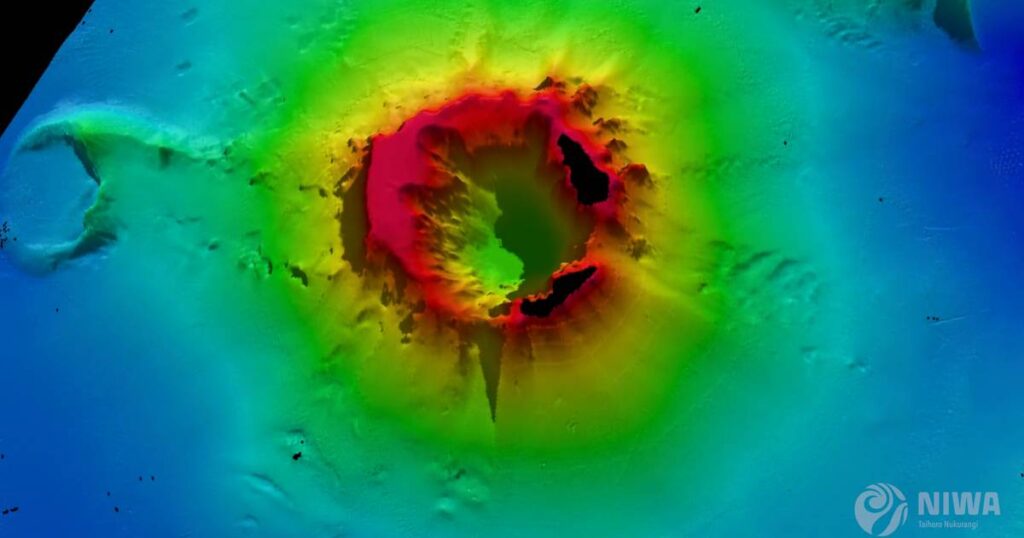Researchers say that the Tongan volcano that erupted in January emitted the biggest atmospheric explosion registered on Earth in more than 100 years.
New Zealand’s National Institute for Water and Atmospheric Research (NIWA) conducted a study which found the explosion led to massive amounts of damage around the sea floor, stretching nearly 100km.
The Hunga-Tonga Hunga-Ha’apai volcano erupted on 15 January, causing tsunamis across the Pacific and devastating parts of Tonga.
It was the largest volcanic eruption since Krakatoa in 1883 and could be seen from space.
NIWA said 10 cubic kilometres of the seafloor was displaced – the equivalent of 2. 6 million Olympic-sized swimming pools. It was a third more than initial estimates.
“The eruption reached record heights, being the first we’ve ever seen to break through into the mesosphere. It was like a shotgun blast directly into the sky,” project leader and NIWA marine geologist Kevin Mackay said.
“The volume of this ‘shotgun’ plume is estimated to be 1. 9km3 of material, which has been circulating in our atmosphere for months, causing the stunning sunsets we saw following the eruption,” he said.
NIWA said that despite the enormous amount of material being displaced, the volcano’s flank remains intact. However, the crater is now 700 metres deeper than before the eruption.
Another thing that researchers were surprised to discover was the magnitude of the pyroclastic flows.
Pyroclastic flows are currents made up of dense lava, volcanic ash, and gases which can reach temperatures of 1000 degrees Celsius and speeds of 700km/h.
For researchers, the extent of the pyroclastic flows had been a mystery. However, after 150 sediment cores were sent to the University of Otago and the National Oceanographic Centre, they realised how massive they were.
The samples showed pyroclastic deposits some 80km from the volcano, but NIWA believes they could’ve travelled further.
NIWA said they had never observed pyroclastic flows underwater at that magnitude and had devised theories about how they were so powerful.
“The sheer force of the flows is astonishing – we saw deposits in valleys beyond the volcano, which is where the international cable lies, meaning they had enough power to flow uphill over huge ridges and then back down again,” Dr Emily Lanen NIWA’s principal scientist for natural hazards said.
“It’s the interaction with water that made this event so unprecedented. It’s still speculation, but the latest science shows that this phenomenon may be more exaggerated underwater. This could be why the pyroclastic flow travelled so far and with such force,” Mackay said.
There was also evidence that the volcano is still erupting after a robot boat found active venting from newly formed cones.
Researchers said that the volcano behaved in a unique way compared to others of a similar size due to its position underwater.
“While this eruption was large – one of the biggest since Krakatoa in 1883 – there have been others of similar magnitude since then that didn’t behave in the same way,” Mackay said.
“The difference here is that it’s an underwater volcano, and it’s also part of the reason we got such big tsunami waves.
”
The report said that the eruption caused significant damage to the area’s ecosystems. There is little to no animal life in the flanks, deeper water channels and most of the seafloor.
However, they said there were patches of life that had survived the eruption on several seamounts, giving hope for recovery..

